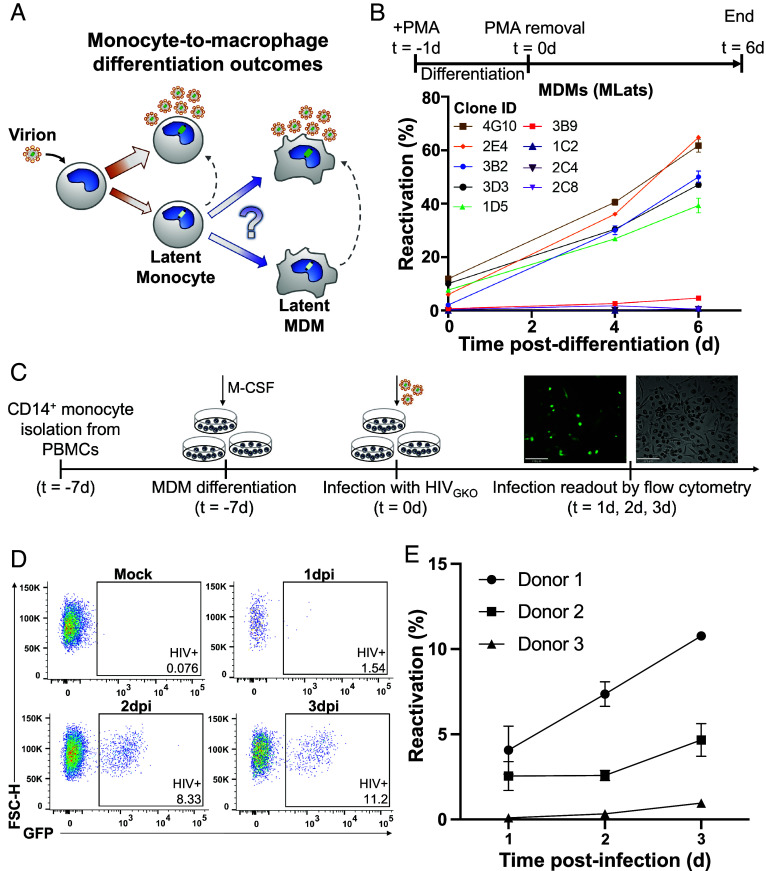Fig. 2.
Macrophage differentiation induces HIV latency reactivation. (A) Schematic showing upon infection, HIV can establish a productively infected and latent state capable of spontaneous reactivation in monocytes. Differentiation of latently infected monocytes into macrophages could result in two potential viral outcomes: latency or active replication. (B) Latently infected monocytes (TLats) were differentiated into macrophages (MLats) with PMA for 24 h. Following PMA removal, MLats were characterized at different timepoints for HIV reactivation (Top). HIV reactivation was quantified by flow cytometry based on GFP fluorescence following monocyte-to-macrophage differentiation (Bottom). Data are represented as mean of at least two independent replicates ± SEM. (C) CD14+ monocytes were isolated from PBMCs, macrophage differentiation was initiated with M-CSF, and cells were infected with HIVGKO for 2 h. HIV latency reactivation was monitored during differentiation via flow cytometry. (D) Representative flow cytometry gating and analysis for HIV-infected CD14+ differentiating macrophages. (E) HIV latency reactivation over time in CD14+ differentiating macrophages from three independent donors. Data are represented as mean of at least three independent replicates ± SEM.

